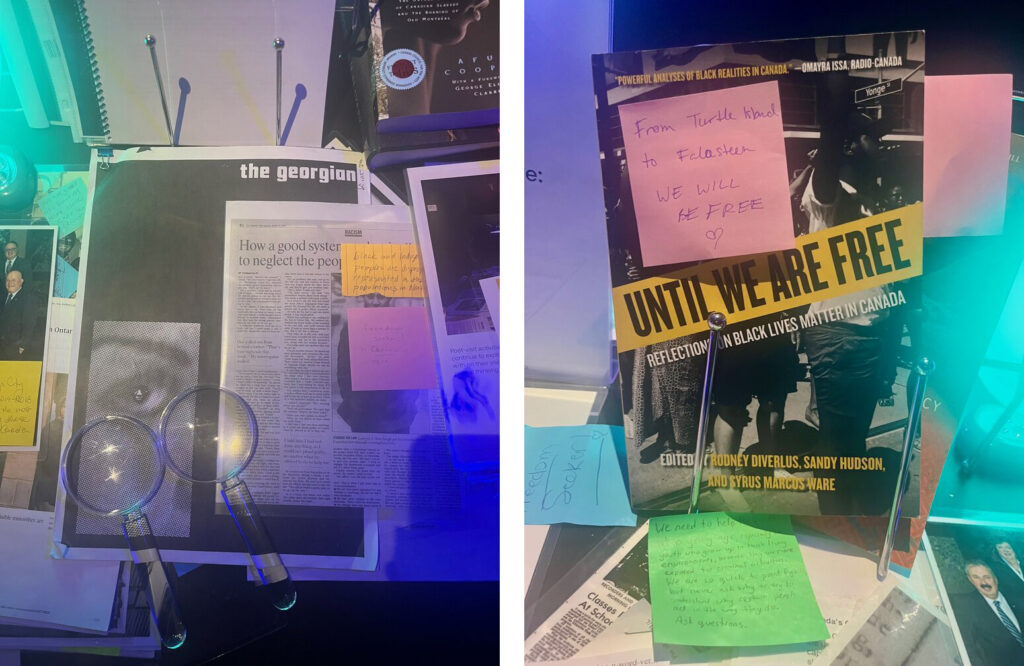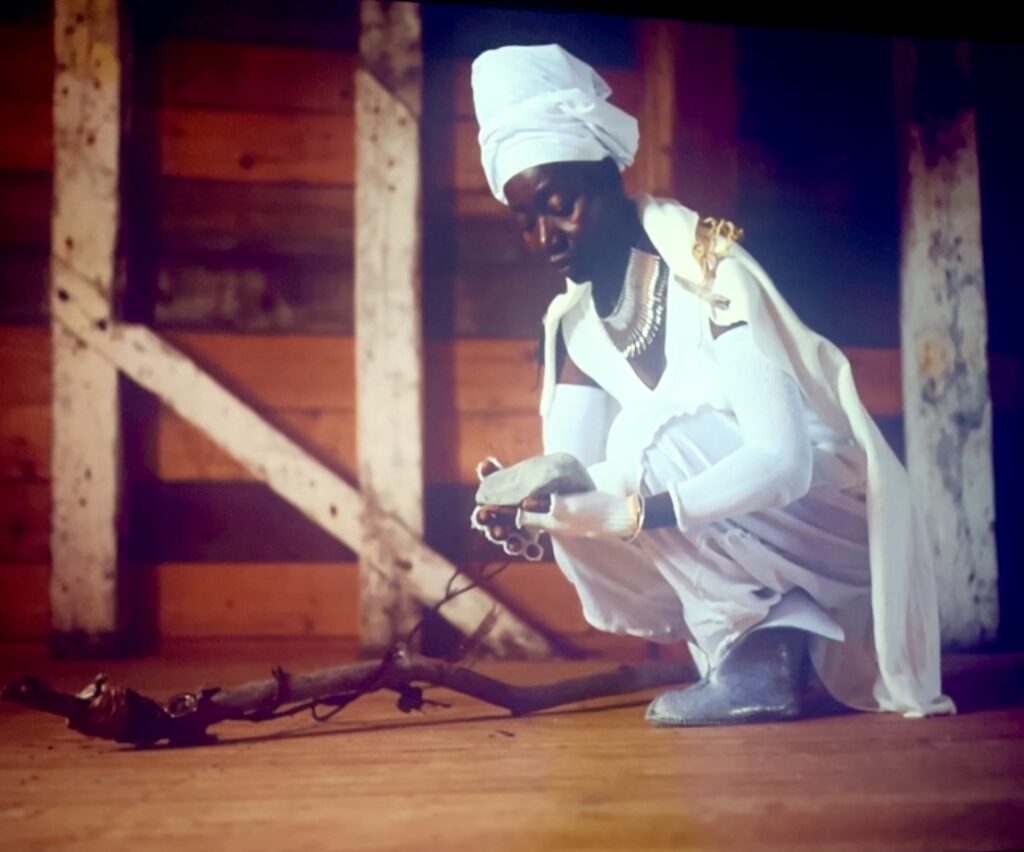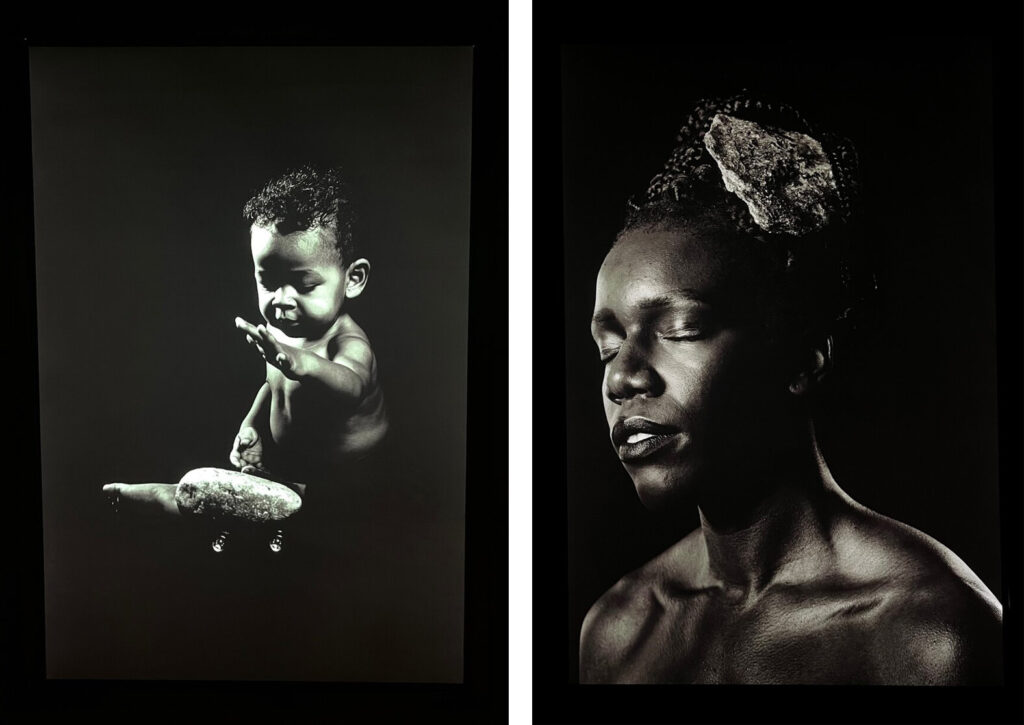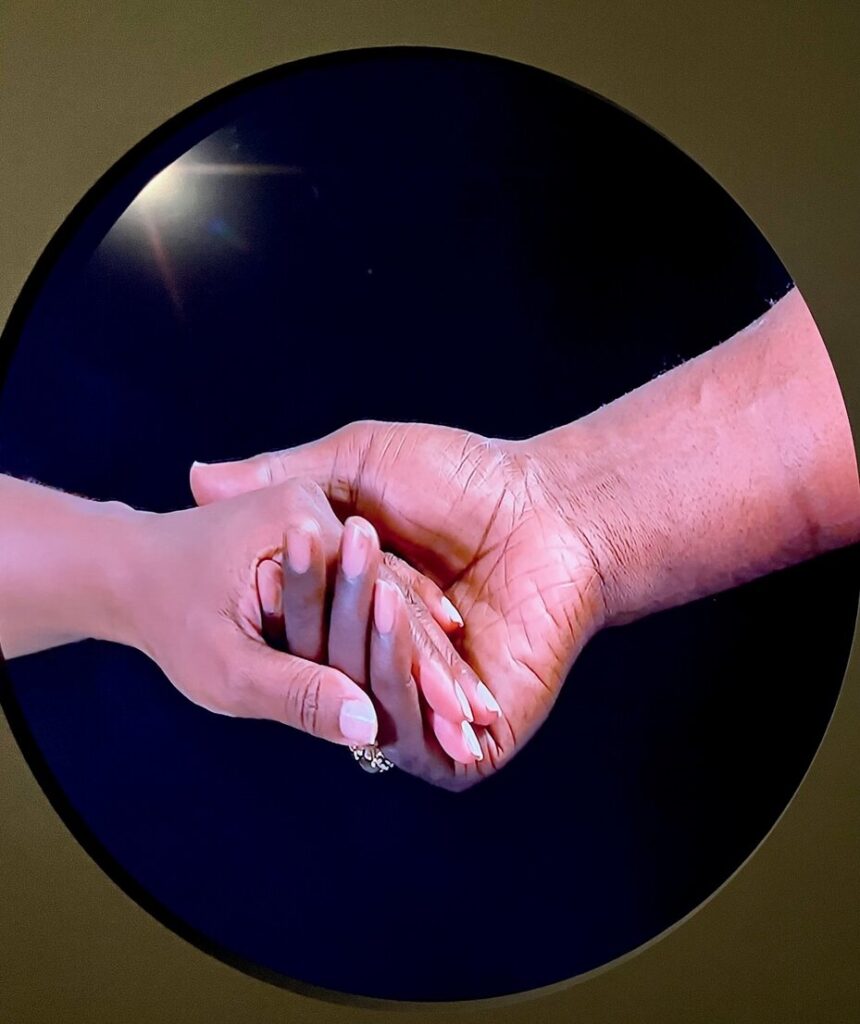Witnessing the Otherworld as an Afronautic Traveller
When we hear about the transatlantic slave trade, which took place from the 16th to the 19th century, we know millions of Africans were taken from their homeland, transported across the Atlantic Ocean, and sold into labor. During the Middle Passage, many enslaved Africans were faced with the horrors of captivity and attempted to escape by jumping overboard, choosing the unknown depths of the ocean over a life in bondage. Their resistance speaks to the great level of fear and desire for freedom that defined this painful journey.
Artist and scholar Camille Turner explores an Afronautic journey through this powerful exhibition that blends art and research. Collaborating with many creatives such as artists, actors, and photographers, she creates an immersive experience that bears witness to the ancestral presence of those who were lost at sea. Using various materials, video installations, photographs, and an interactive research lab, the exhibit offers a profound message about memory, history, and the spiritual echoes that linger over the ocean’s rushing waters. Presented at the Art Museum at University of Toronto, the Otherworld exhibit invites viewers to engage with the past, present and future in a meaningful way.
I interpret Otherworld as an alternative reality where the spirits of enslaved African ancestors return to land, stepping into a time where their presence makes a statement about their strength and unity. A space where history is no longer buried, but reclaimed—where the silenced find their voices, and the lost are no longer forgotten.
The exhibit begins with four chairs arranged to resemble first-class seats on an airplane. A window-like display shows an image of the Earth slowly rotating. The narration is calming and meditative and urges visitors to rest, take deep breaths, and embrace the presence of their ancestors.
Outerregion Collective and Camille Turner, Afronautic Research Lab, 2016 – ongoing
The atmosphere was dark, with soft music filling the space, drawing me deeper into each room. As I moved through the exhibit, watching videos and examining archival materials, I was confronted with the weight of lost stories. Turner invites visitors to engage with archival materials: articles, books, photographs, and information about slave ships, along with magnifying glasses, Post-it notes, and pens. It’s a great conversation starter.
Right next to the Research Lab was the video installation Afronautic Research Lab: Newfoundland 2019. As I watched Turner listen to the echoes of the ocean, I realized the importance of the ocean in hearing untold stories, remembering, and going to the source of loss. She sorted through books, maps, and scattered fragments—collecting pieces to bring back. Each item holds a story, a tribute to the ancestors who were forced to forget their names and history. By connecting archival materials, the installation encourages visitors to reflect, witness, and remember, not to stay harboured in the past but as a commitment to acknowledging it.
Camille Turner, Afronautic Research Lab: Newfoundland 2019, video installation
In the next room, 19 portals hung from the ceiling, which made a strong impression on me. Each one displayed different images, offering a glimpse of the past. The past is portrayed through images of slave ships, rocks along the ocean shore, and fire in what seems to be a plantation field. Other images showed deep waters, and some images were blurred and out of focus, with only a small window of light, alluding to the experience of being on a slave ship. These portals symbolized the journey of the Middle Passage, the trauma of being enslaved, the restraints on the ship, and the transition into an unfamiliar environment.
Camille Turner, Portals, 2024, installation with nineteen images printed on fabric (middle) and details (left and right)
As I continued through the exhibit, I entered a room filled with black-and-white photographs displayed on vinyl lightboxes. I was pleased to see another collaboration between Camal Pirbhai and Camille Turner. The images featured men, women and children, each using rock as an accessory. The ocean serves as witness to the Middle Passage, and the materials it holds—rocks, sticks, bones—carry many memories. These elements become reflections of Black identity and symbols of emotional baggage.
Camel Pirbhai and Camille Turner, Rocks, 2021 – ongoing, black-and-white photography on vinyl lightbox, both 38 x 26 x 1.5 inches
The memories are etched into Black identity. It’s not something you can escape but it’s something that can be cherished across many generations. Speaking of different generations, in the installation, Maria, the video portrays two hands coming from opposite sides of the screen to join in the middle as a connection to the enslaved children who were on the ships, some who were separated from their families. The installation references the 50-ton ship in Newfoundland that carried 75 children in 1785. It delivers a powerful message of loss, yet also of reconnection and resilience. The audio sheds light on three enslaved children’s autobiographical stories, Olaudah Equiano, Mary Prince, and Sophia Burthen Pooley.
Camille Turner, Maria, 2023, video and 2 channel sound installation (10:59)
In conclusion, Otherworld is more than a presentation of historical documents—it wants us to acknowledge, reflect, and act upon the findings of Turner’s exhibit. The interactive elements encourage visitors to move beyond passive observation, pushing them to engage in difficult truths and question how history continues to shape the present. Leaving the exhibit, I carried the weight of these stories with me—stories that demand recognition, accountability, and change.
Text and photo: Abuk Lual
*Exhibition information: Camille Turner, Otherworld, September 4, 2024 – March 22, 2025, Art Museum at the University of Toronto, 15 King’s College Circle, Toronto. Museum hours: Tue – Sat 12 – 5 pm, Wed 12 – 8 pm.





